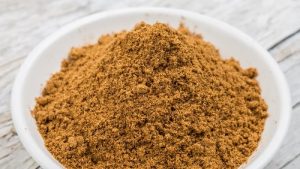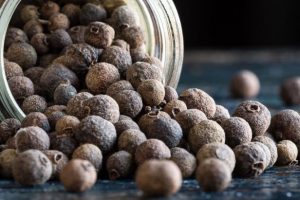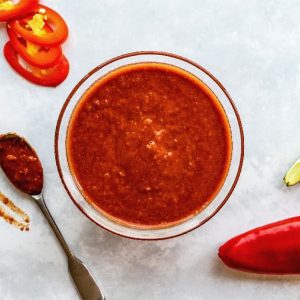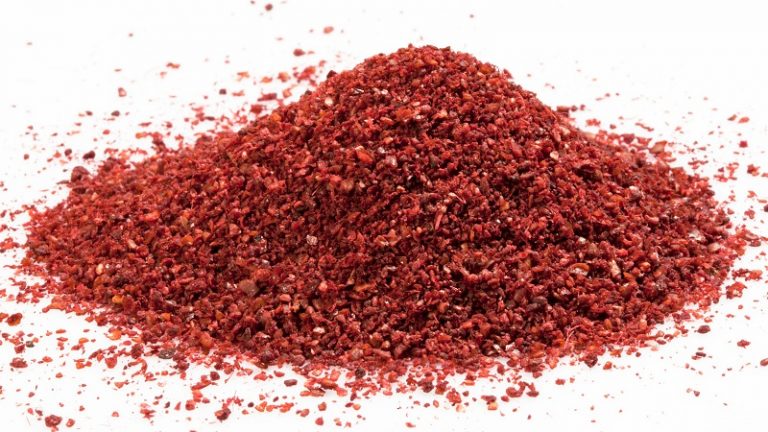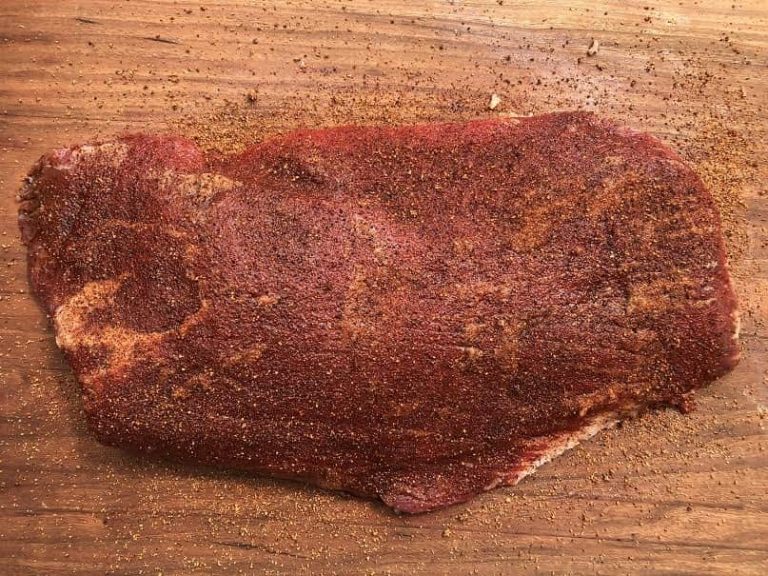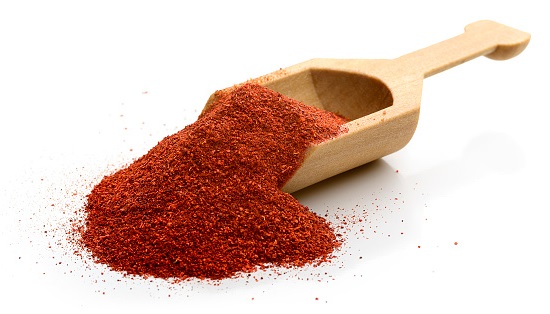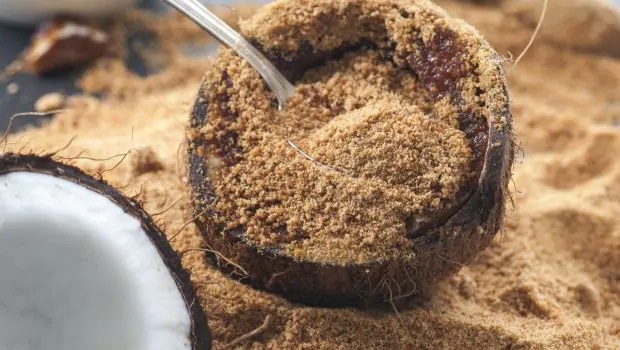Substitutes for Curry Powder and How To Make Your Own At Home
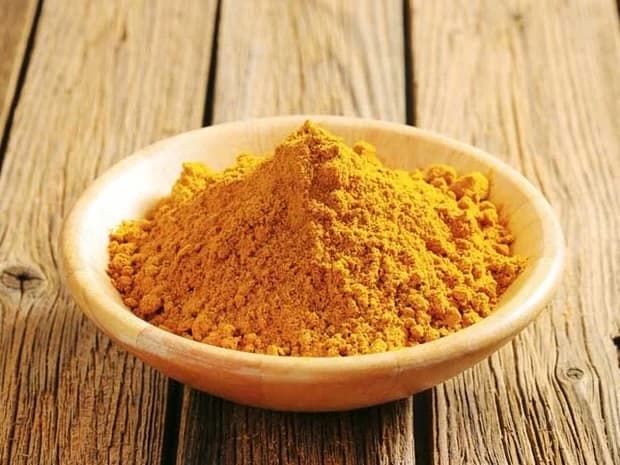
Curry powder is a blend of spices that come together to give a robust and warm flavor to many different Indian dishes, such as Chicken Tikka Masala, Panang, Korma, Butter Chicken, and Vindaloo.
The flavors and tastes that come with Indian curries are due to the use of different spices in the blend. These spices can be substituted depending on what is available, and curry powder can even be made at home with a few simple ingredients. Curry powder is also referred to as Garam Masala in North India. The word “Kari” is originally a Tamil word that means “sauce”.
However, Curry Powder is not always available at home. That’s why in this article we’ll discuss different substitutes you can use if you don’t have Curry Powder and how to make your own!
Top Substitutes for Curry Powder
There are many substitutes for curry powder that can be used in recipes. Most recipes only need an ingredient or two from the list below:
Cumin, Coriander, Turmeric, and Ginger
If you are looking for a curry powder substitute, you can use cumin, coriander, turmeric, and ginger to adjust the taste. Each of these spices has different flavors that will change the overall taste of your dish. Experiment with different combinations and amounts to find the proper flavor profile for your requirements.
Madras Curry Powder
Madras Curry Powder is a type of curry powder that is made with hotter spices than other types of curry powder.
Making Madras Curry Powder At Home:
You will need a teaspoon of each:
- cayenne pepper
- ground ginger
- ground cinnamon
- ground cloves
- ground black pepper
- salt
- cumin seeds
- coriander seeds
This option is widely used in Indian recipes to replace regular curry with madras curry powder.
Madras Curry or Curry Powder
The main difference between Madras Curry and other curry powders is the heat level. Madras Curry contains Cayenne pepper, while the other has none. This gives it a spicier flavor which some people prefer. However, if you don’t have access to Madras Curry or want to make your own curry powder at home, you can use any other type of curry powder.
Garam Masala
Garam masala is a spice powder used in Indian cuisine. It is made from a variety of spices, including cinnamon, black pepper, cloves, and cardamom pods. Garam masala shares many similarities with curry powder, but it’s more intense, so use sparingly. Some substitutes such as garam masala, chaat masala, and curry paste offer a different flavor than regular curry powder.
Onion Powder
Onion powder is a spice made from ground onions. It is a substitute for curry powder and can be used in any recipe that calls for curry powder. Onion powder has a much simpler flavor than curry powder and lacks the complex flavors of different spices that are found in curry powders, but it is still versatile and can be used in many different dishes.
Tandoori Masala
Tandoori masala is a popular Indian spice mix that has an almost similar flavor to curry powder. It is made with a variety of different spices, including cumin, coriander, and paprika.
If you are looking for a perfect substitute for curry powder, tandoori masala is the answer. This spice mix contains all the flavors of curry powder and more. In particular, it has fenugreek, nutmeg, mace, cardamom, and garlic which give it a unique flavor, just use half the quantity called for in the recipe.
Sambar Powder
Sambar powder is a popular Indian spice mix that is used as a curry powder substitute. It is made up of cayenne pepper, ground coriander seed, black mustard seed, fenugreek seed, and garlic powder. These spices can be used as substitutes for sambar powder in most recipes.
Chinese 5 Spice
Chinese 5 Spice is a popular spice blend that originated in China. It typically includes cinnamon, cloves, fennel seeds, and Szechuan pepper. The flavor is slightly spicy with a sweet undertone. It can be used in many dishes to add flavor and depth.
Curry Roux
Curry roux is a popular substitute for curry powder. It is made of flour, fat, and curry powder. The flour and fat are used to thicken the sauce while the curry powder adds flavor. Roux can be purchased in solid or powdered form.
If you are looking for a way to add flavor and spice to your dish without adding any other seasonings, then try using curry roux. It is a solid substance that can be cut or grated according to the volume of use. The roux can be sprinkled on the finished dish before serving. It will add a lot of flavor to the dish.
Curry Paste
Curry paste is a mixture of spices that is used in Thai and Indian cuisine. It usually contains chili peppers, garlic, ginger, lemongrass, and shrimp paste. The ingredients are mashed together to form a pasty consistency. Curry paste can be made at home by combining various spices such as cumin, coriander, turmeric, and cardamom.
There are three main types of curry paste- red, yellow, and green. The most common one is red, which is made with a combination of dried spices such as cumin, coriander, and turmeric. Yellow curry paste is made with fresh spices such as ginger, garlic, and lemongrass, while green curry paste contains fresh herbs such as Thai basil.
If you’re looking for a substitute for curry powder, you can try making a paste. If you are in a hurry, some brands of curry paste will work in a pinch. Madras and Jamaican curries can be found in most grocery stores, but other varieties might need to be purchased from an international store.
Usage of Curry Paste
- When cooking with curry paste, it is important to medium-heat the oil first before adding the paste. This will help to bring out the flavors of the paste and make sure that it cooks evenly.
- Add your protein and leave it for 3 minutes.
- Add the paste with ginger and allow it to cook for one minute. This will give your dish some of the same flavors as if you had used curry powder.
- You can also add coconut milk to make the sauce thicker and reduce the heat to medium-low so that the flavors have a chance to blend together.
- Bring the ingredients to a boil. Stir for 5-10 minutes.
- You can then coat the vegetables in the sauce and cook for another 2-3 minutes to allow them to soften. This will give the vegetables a delicious curry flavor that you can enjoy.
- Simply remove from heat and garnish with lime and cilantro. Finally, you can serve it over rice for a delicious meal.
Chaat Masala
Chaat Masala is a mixture of spices that is used in Indian cuisine. It has a curry flavor with citrus overtones. This recipe uses 1/4 cup of chaat masala, which can be adjusted to taste.
Chaat Masala is a blend of different spices that are commonly used in Indian cuisine to add flavor to snacks and appetizers. The mixture typically contains cumin, coriander, amchur (dried mango powder), black pepper, salt, asafoetida, and ginger. It can be purchased pre-mixed or you can make your own blend at home.
If you don’t have chaat masala, you can use a mix of curry powder and garam masala. Garam masala is a blend of different spices that will give your dish the same flavor profile as chaat masala.
Coriander Seeds
Coriander seeds are one of the key ingredients in curry powder. They have a fresh, minty, and floral scent with a subtle sweetness. They can be used as a healthy substitute for cumin. Garam masala is a popular Indian spice mix that is one of the best alternatives to cumin. Coriander seeds and leaves can be swapped for a healthy substitute that provides great flavor without any health risks. Garlic salt adds great flavor with little risk to your health while garlic powder has been linked to respiratory issues in some people but garlic powder also has other uses such as flavoring lentils or making rice dishes more flavorful.
Cumin Powder and Chili
Ground cumin and chili can be used as a substitute for curry powder in most recipes. Start with a small amount and add more until the recipe tastes just right.
Cumin powder is a spice that is made from the dried seeds of the cumin plant. It has a strong, earthy flavor that can be bitter or pungent, depending on the variety. Chili powder is made from ground chilies and other spices, such as cumin and oregano. It has a spicy, peppery flavor that can be quite hot.
Allspice
Allspice is a spice blend that is made up of many different spices, including curry powder, cloves, cinnamon, and nutmeg. It has a warm and earthy flavor and is sweeter than curry powder but lacks the heat present in that spice. Allspice can be used in place of curry powder in any recipe.
Indian Curry and Thai Curry
There are many different types of curries, but two of the most popular are Indian curry and Thai curry.
Indian curry is typically made with water and yogurt, while Thai curry uses coconut milk. Thai curries rely heavily on chili peppers, whereas Indian curries use spices like coriander and turmeric.
Thai curries are also creamier than Indian curries, which are more soup-like inconsistency.
Green Curry
Green curry is a popular Thai dish made of green curry paste and proteins or vegetables. The dish is typically spicy and can be made with chicken, shrimp, beef, tofu, or vegetables.
Green curry is our favorite type of Thai curry. It is made with coconut milk, green chili peppers, Thai basil leaves, and bamboo shoots.
Green curry is a popular Thai dish that gets its vibrant color from makrut lime leaves with fresh green chili peppers, fresh cilantro, basil, and peels. It also typically includes lemongrass, peppercorn, shrimp paste, and garlic.
Red Curry
Red curry paste is a popular Thai spice that gets its red color from dried long red chili peppers, fresh turmeric, and shrimp paste. It has a bold flavor and is often used in curries, soups, and sauces.
Red curry is a popular Thai dish that consists of various spices. It is made with coconut milk, lemongrass, green bell peppers, bamboo shoots, cilantro root, coriander, cumin, and fresh basil leaves. Another key ingredient in red curry paste is galangal, a rhizome similar to ginger. All of these spices are essential in the flavor profile of red curry, making it one of the most beloved dishes in Thailand.
Yellow Curry
Yellow Curry is a Thai dish made with coconut milk, chicken/fish, yellow curry paste, and various vegetables. It has a strong flavor and is often compared to Indian curries. It is usually served with steamed rice.
Yellow Curry gets its name from the color of the paste used to make it, which is a combination of turmeric and yellow chilis. This particular type of curry has a sweet flavor and a soothing pale yellow color.
How to Make Curry Powder at Home
Making your own curry powder is a great way to save money and customize the flavor profile to your liking. All you need are some common spices that you already have in your pantry. It’s easy to make, and you can adjust the recipe to fit your own taste preferences.
- All you need is ground cumin, ground coriander, turmeric, ginger, yellow mustard, and cayenne pepper.
- Dry roast the spices to bring out their flavor. Heat a skillet on medium-high heat, and add the spices. Stir constantly until they are aromatic, about 2 minutes.
- Let the spices cool completely before grinding them into a powder using a spice grinder or mortar and pestle
- Store the curry powder in an airtight container in a dark, cool place for up to 6 months.
- To make your own curry dish, start by heating oil in a pan. Add the onion and cook until softened, about 5 minutes. Stir in the ground curry powder and cook for another minute. Then, add your desired protein and vegetables and cook until done. Serve with rice or naan bread.
Recipes That Use Curry Powder
Curry powder is used in many different recipes. Here are a few examples of recipes that use curry powder:
Curry Chickpea Pot Pie
It is a vegetarian dish that uses chickpeas, lentils, carrots, cabbage, onion, garlic, millet, and curry powder. If you are not vegan, you can use meat or dairy in this dish.
Curry Chutney Dipping Sauce
This is a delicious dip sauce that you can make in minutes. Simply combine the ingredients in a bowl and mix them together. You can store it in the fridge for up to 3 days.
Curried Butternut Squash Soup with Almonds
This Curried Butternut Squash Soup is the perfect Fall dish. It’s flavorful, easy to make, and can be enjoyed as a main course or appetizer. It is combined with olive oil, onion, garlic, vegetable broth, and curry powder to make this soup extra delicious. Plus, it’s a Thanksgiving favorite! To top it off, garnish with some almonds and yogurt before serving.
Curried Israeli Couscous (Mograbieh)
Curried Israeli Couscous is a flavorful and easy dish to make. It is made with raisins, bell peppers, onion, and broth. The couscous can be made vegetarian by using vegetable broth or beef broth if desired.
Grilled Paneer Cheese with Curry Vinaigrette and Mango Chutney
Paneer is a cheese that is popular in Indian cuisine. It is firm, so it holds its shape well when grilled, and it absorbs flavors easily. It is typically served with chutney- a type of sauce made from different fruits or vegetables- and a curry vinaigrette, which is a dressing made with curry powder.
Other recommendations:
- One great way to spice up your lasagna is to add curry powder. It will give it a flavorful and unique taste that you’re sure to enjoy.
- Many Thai soups use curry paste as a main flavor component.
- One dish that pairs well with curry powder is Thai soup. The soup has a sweet and savory flavor that can be enhanced by the addition of curry powder. Another option is to use coconut milk in place of regular milk or cream. The richness of the coconut milk will complement the flavor of the curry powder nicely.
- Adding curry powder to scrambled eggs will give them a bold flavor.
- Another way to enjoy its flavor is to sprinkle it on top of a salad bowl before adding the dressing. This will give the salad a delicious and exotic flavor.
Additionally, it can be used in chicken dishes, beef dishes, and even desserts!
FAQ’s
Here are some Frequently Asked Questions you might wonder about:
What is curry powder?
Curry powder is a spice mix made from the local spices of India. The British introduced it to replicate the flavors of Indian curries. It consists of black pepper, chili, turmeric, cumin powder, ginger, and coriander seeds.
However, you can always add star anise, cardamom, nutmeg, fennel, bay leaf, fenugreek seeds, clove, mustard, and cinnamon in it to make it more interesting and enhance the flavor.
What does curry powder taste like?
The taste can be difficult to describe, but it is often combined with cinnamon, nutmeg, red pepper flakes, fennel seeds, coriander seeds, cloves, garlic powder, onion powder, and cumin to help you understand the flavor. With this knowledge, you can experiment with different blends to create your own unique curry flavor profile. It has an earthy flavor. Depending on how much black pepper is used, the curry will be milder or hotter. If more red pepper is used, the curry will be spicier.
Can I use paprika instead of curry powder?
Simply, you can. Paprika can be used as a substitute for curry powder in many dishes. It has a similar flavor profile and will give your dish a slight kick. However, Curry powder is still not just ground up chili peppers, but it also includes other spices, like turmeric and coriander.
Where does the term “curry” come from?
The word “curry” comes from the Tamil word “Kari”, which means “sauce”. Curry is a popular dish originating from India. It has been adapted and transformed into many different forms, but the most well-known version of curry is British Indian cuisine.
Can you substitute regular curry powder for madras curry and vice versa?
Madras Curry Powder is spicier than regular curry powder. It can be substituted in recipes, but it is important to keep in mind that the taste of the dish may differ from what you are used to. The flavors of spices can vary depending on the region they are grown in, so it is always a good idea to ask an expert or do some research before making any large changes.
MySpicer carries Madras Curry and Curry Powder. Additionally, all spices are 100% natural with no artificial colors or flavors. They take credit for creating the perfect blend of spices so we can cook delicious Indian cuisine every time.
Is turmeric the same as curry?
Turmeric is an ingredient while curry powder is multiple spices blended together. Curry powder typically contains turmeric, coriander, cumin, and fenugreek.
Red curry or green curry?
Both are the main types of Thai curry. Red curry is made from dried long red chilies, while Green curry is made from green chilies. They both have different flavors and levels of heat. However, Red curry paste is used in a greater variety of dishes than green curry, as it has a more complex flavor.
Can I substitute red curry paste for red curry powder?
Yes, you can substitute red curry paste for red curry powder in most recipes. Red curry paste is thicker and has a more intense flavor than red curry powder, so you may need to use a little less. If the recipe doesn’t call for any other ingredients that are unique to red curry paste, such as lemongrass or galangal, then you can probably just use chili powder as a substitute.
Can you substitute yellow curry for red curry?
Yes, yellow curry paste can be replaced with a combination of red and green curry paste. The two pastes share many of the same flavors, but they are used for different stages of the dish. For example, red curry is typically used as a base flavor, while the green curry is used as a garnish.
There are many substitutes for yellow curry paste. The most common include chili powder and tomato sauce with chili flakes, garlic and chili sauce, or turmeric with chilis. These substitutes can be used in dishes where the heat level is not too high. If you are looking for a substitute with more heat, then Kashmiri red chili powder can be used. This spice has a similar flavor to regular curry powder but it packs more of a punch. It also goes well with dishes that require a bit of sweetness to balance out the heat.
Read also: caraway seed alternatives
How much curry powder do you use?
Curry powder is a popular spice blend that can be found in most grocery stores. It’s used in many different dishes, and the amount you need will depend on the recipe. A tablespoon or two is usually enough, but you may need more or less depending on what you’re making.
If you’re not sure how much to use, it’s best to start with a smaller amount and add more if needed. Curry spices are sometimes used in recipes without specifying how much of a particular spice blend to use. So if you’re not sure, it’s best to start with a smaller amount and add more if needed.
Is yellow curry powder the same as curry powder?
No, yellow curry powder is not the same as curry powder. Curry powder is a blend of different spices, while yellow curry powder contains turmeric which gives it its characteristic yellow color. If you don’t have yellow curry powder, you can use white or brown instead. The yellow mustard powder doesn’t contain any turmeric so your curry might not be quite as bright yellow, but it’ll still help with that. Cayenne pepper is a type of chili pepper and has a different flavor profile than chili powder.
How do you thicken a curry?
There are a few ways to thicken a curry sauce. One way is to add lentils or mashed potatoes to the sauce. Another way is to add a tablespoon of cornstarch or arrowroot powder. Roux is another option for thickening sauces, particularly those made in a skillet like this one – just add butter and flour and cook over low heat until browned.
Can you substitute yellow curry powder for yellow curry paste?
Although they have the same name, yellow curry powder and yellow curry paste are not the same things. Yellow curry powder is a dry spice mix, while yellow curry paste is a wet mixture of spices. If a recipe calls for yellow curry powder, you cannot substitute yellow curry paste and vice versa.
However, green curry paste and red curry paste are good substitutes for each other. They both contain many of the same spices, so they will give your dish a similar flavor profile.
If you don’t have any yellow curry powder or paste on hand, there are several other substitutes that you can use. Chili powder, chili paste, tomato with chili flakes, and turmeric all have a similar flavor to yellow Curry sauce or powder. Mustard powder is also a possible substitute for yellow curry paste; just be aware that it is a dry powder, so you’ll need to add some liquid to your recipe if using it as a substitution.
Finally, cayenne pepper is another type of chili pepper that can be used as a substitute for chili powder in recipes. It’s important to note that cayenne pepper can be much hotter than chili powder, so use it sparingly if substituting it in place of chili powder in your recipe.
Are cumin and curry the same thing?
When you’re looking to add a bit of flavor to your dish, it’s important to know the difference between cumin and curry. Cumin is a single spice, while the curry is a blend of spices. Curries often contain garlic or onion, which are not considered herbs. Cumin has a more herby taste, while the curry is more earthy.
So what’s the difference? Cumin is a single spice, whereas curry is a blend of many different spices. Curries often contain garlic or onion, which are not considered herbs. Cumin tastes more like an herb, while the curry is more earthy and intense.
Conclusion
Curry powder is one of the most versatile spices for cooking. It can be used in countless recipes, and it adds a delicious flavor to any dish. The primary flavor of curry powder comes from cardamom, which gives it its savory sweetness. This spice blend also contains other flavors like cumin, coriander, and turmeric, which all work together to create an amazing taste.
In conclusion, there are a lot of substitutes for curry powder as we’ve discussed in the article. You can store the substitutes needed or you can always make your own! Just make sure not to store them for so long. Make sure to try the recipes we showed in the article!

